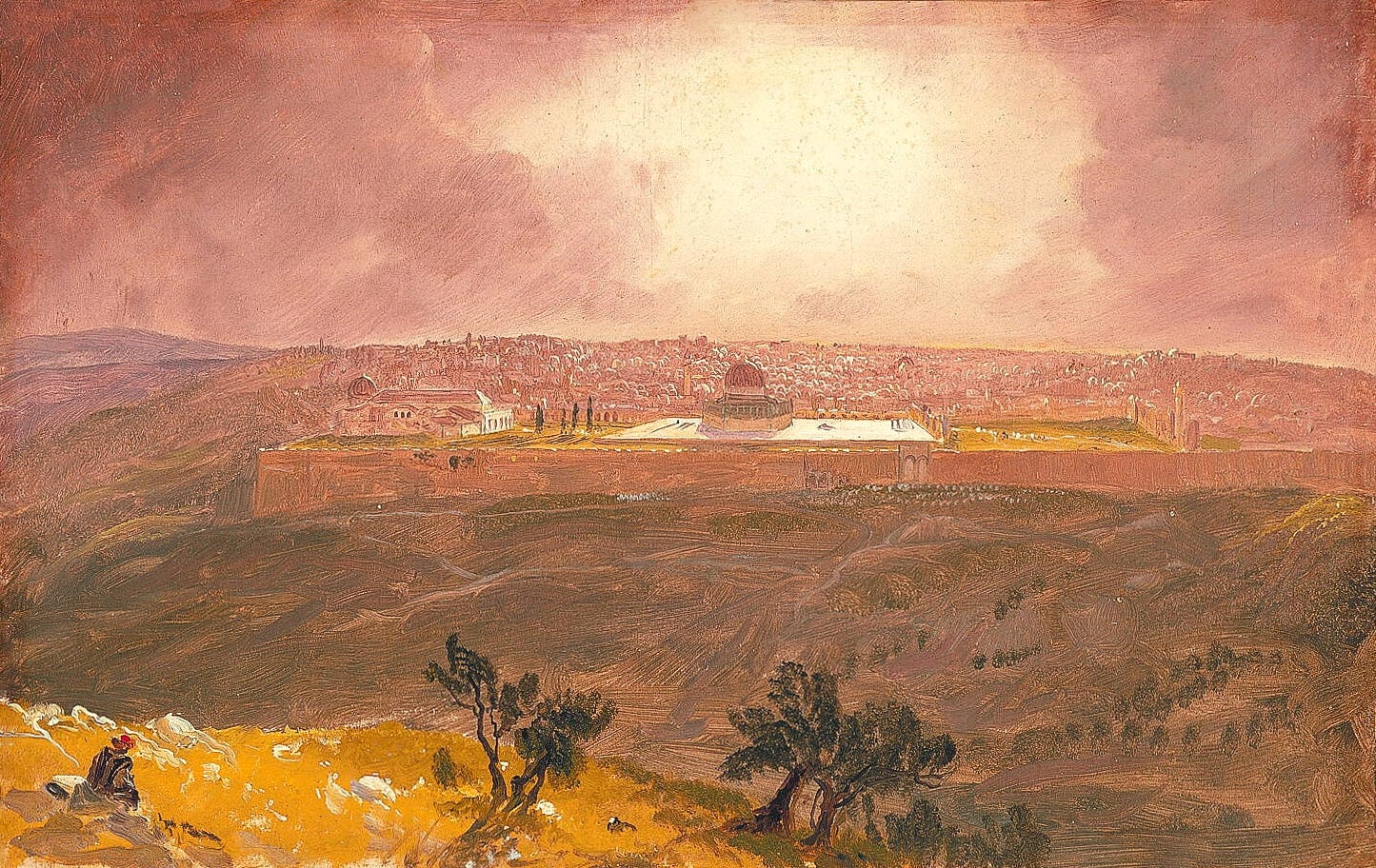In 2025, Pray the Bible
A simple idea with remarkable power
Thank you to Rosa Gilbert of In Light of Eternity for mentioning Donald Whitney’s book Praying the Bible in a recent comment on my post about prayer. I’d been meaning to read it, and that gave me the nudge I needed.
How to Pray the Bible
When you pray, do you ever feel like you’re saying the same old things. . .about the same old things?
If you do, you’re hardly alone. As a pastor, Donald Whitney noticed that a lot of believers feel this way. As a result, their prayer lives often withered over time. Some rarely prayed or even stopped praying altogether.
The idea behind Whitney’s book, Praying the Bible, isn’t new. In it, acknowledges the concept is ancient, as old as Scripture itself. Part of the reason the practice endures is that it’s both straightforward and powerful.
As Whitney writes:
So what is the simple solution to the boring routine of saying the same old things about the same old things? Here it is: when you pray, pray through a passage of Scripture, particularly a psalm.
That probably didn’t seem as dramatic as you were expecting.
Using the well-known Psalm 23, he shows how this works:
You read the first verse—“The Lord is my shepherd”—and you pray something like this:
Lord I thank you that you are my shepherd. You’re a good shepherd. You have shepherded me all my life. And, great Shepherd, please shepherd my family today: guard them from the ways of the world; guide them into the ways of God. . .
The prayer continues on with requests for one’s children, for leaders in the local church, and for wisdom regarding a decision. They’re the topics you’d commonly pray about, now refreshed by God’s Word. When you pray the Bible, new power fills a seemingly simple prayer.
The result can also be stirring. Try it yourself right now by reading Hebrews 12:22-24 and praying in response, using the text as a springboard:
But you have come to Mount Zion, to the heavenly Jerusalem, the city of the living God. You have come to thousands upon thousands of angels in joyful assembly, to the church of the firstborn, whose names are written in heaven. You have come to God, the judge of all men, to the sprits of righteous men made perfect, to Jesus the mediator of a new covenant, and to the sprinkled blood that speaks a better word than the blood of Abel.
Try it right now. The only way to learn to pray the Bible is by doing it. Take your time. I’m in no hurry.

Two different people, both starting with the same biblical text, could pray very differently, of course. Here’s an example of one possible prayer response to Hebrews 12:22-24:
Lord God, I thank you for welcoming me to Mount Zion. How amazing it is, Father, to enter into the heavenly Jerusalem, while still here on earth. Help me to reflect on what it means that you’ve already drawn me into your eternal city, the city of the living God.
Lord, thank you for Jesus, the firstborn from the dead. Help me never to forget that my name is written in heaven. Thank you for all of the believers whose names are written in heaven. Help all your people to remember that this is an honor we never could have earned. Grow our hearts. Help us live like we truly know that having our names written in heaven is worth more than anything we could ever receive in this world.
That prayer, as you might have noticed, only engages the first verse-and-a-half or so from the Hebrews quote.
So, it’s your turn again. Start fresh with your own words. Or, for a running start, use mine. Then continue the prayer for as long as you like.
Once again, give it a try right now.

The Art and Craft of Prayer
There’s a musical element to praying the Bible. A beginner sits hunched over a guitar, awkwardly plucking out scales. But as time passes, the notes begin to flow smoothly. One day, hardly realizing it, the musician starts to improvise an original melody. Yet it was only possible because of the hours of patient toil.
There’s an element of craft. A woodworker holds a piece of oak in his hands. In his mind, he already sees the leg of a chair forming. Once again, this is only possible because of countless hours of experience and experimentation, the many cycles of failure and renewed persistence.
Analogies always have their limitations. Here, this works in our favor. A beginning woodworker might fail to make a chair that’s sturdy enough to use. But the very first time a believer prays the Bible, the words are pleasing to God.
Get Started, Keep Learning
Much more can be said about praying the Bible. Enough to fill a whole book, as it turns out. Donald Whitney offers practical strategies, encouragements to urge you on, and even notes of caution. But you don’t need any book other than the Bible to dive in and try praying this way. You can refine your practice by learning directly from the Word and the Spirit, as well as over time from faithful friends, pastors, and writers like Whitney.
To that end, let me offer a few thoughts. They’re not going to answer every question that might come to mind for you as you begin (or continue) to pray the Bible. They’re just what’s on my mind right now.
In no particular order, they are:
Start with the psalms.
Be cautious with the psalms.
Variety overcomes vain repetition.
Start with the Psalms
Whitney urges his readers to start this practice using the psalms, noting the ease with which they can be turned into prayer. “Many. . .psalms,” he writes, “address the Lord directly and can be prayed verbatim.”
Yes, he said verbatim. Despite some misconceptions, it’s fine to simply read prayers. A preference for improvised prayer is relatively new in church history. And with the extraordinary range of human emotions expressed in the psalms, there’s one that fits any life circumstance. Yet even those who begin praying psalms by recitation will likely find that their prayers soon become distinct and personal.
Be Cautious with the Psalms
Which, if you’re familiar with the psalms, raises some questions. Chief among these is the quandary of what to do with imprecatory psalms. These include requests for God to bring curses upon enemies. An example is Psalm 140, verses 9-10:
Let the heads of those who surround me be covered with the trouble their lips have caused.
Let burning coals fall upon them; may they be thrown into the fire, into miry pits, never to rise.
Pleas of this kind are not uncommon in the Old Testament. In fact, some psalms consist of little more than cries for God’s avenging justice. Ancient Israel, again and again, found itself under threat from literal armies, and fierce language was an understandable response. But as Christians we’ve learned that “our struggle is not against flesh and blood.”1 So, what are we supposed to do with verses like this? As Whitney points out, it’s hard to square imprecatory prayer with Jesus’ instruction to love our enemies.
Whether you’re singing or praying psalms, imprecatory passages raise all kinds of questions. It’s a big enough topic that I intend to make it the focus of a future post. For now I’ll simply say, humble yourself before you pray. And, to paraphrase Jesus, pray for others as you would like them to pray for you.2
Variety Overcomes Vain Repetition
I recently wrote a post contending that both improvised and recited prayers are valid and pleasing to God, as well as that prayer can combine elements of both. One commenter shared a concern—a common one in the Christian circles I know—that reciting written prayers could lead to the “vain repetition” that Jesus warns us to avoid.3
Like the topic of imprecatory psalms, vain or empty repetition in prayer deserves much lengthier consideration than what I’ll offer here. But I do strongly believe that praying the Bible is one of the most straightforward ways to avoid this tendency.
The Word of God offers all variety of vivid language and images to incorporate into our worship. Scripture can breathe new life and perspective into even those prayers that we bring to God time and time again.4
The pair of passages I quoted earlier are but a drop in the ocean of the Bible’s offerings. And yet they still illustrate how fresh scriptural images can enliven familiar prayers. How often, in prayer, do you specifically address the Lord as your Shepherd? (Psalm 23) Even if it’s not very often, it’s probably still more frequently than you recall Mount Zion or the heavenly Jerusalem (Hebrews 12:22-24) while talking to God. Such powerful images abound in God’s Word, ready to enrich our prayers.
Consider just a few of the images that the Lord uses for himself: Father, King, Lord, Master, Shepherd, Savior, Friend, Comforter. Praying to God by each of those titles will give you a true sense of who he is, yet every one is also distinct.
As you grow in praying the Bible, you’ll also find that you’re doing much more than inserting different words and images into the “same old” prayers. The Lord will use his Word and Spirit to actively reshape your heart and mind. In doing so, he’s preparing you for an even deeper prayer life and walk with him.
Thank you so much for reading. Blessings to you and your loved ones for 2025! I’m really grateful for the new readers who’ve joined over the last couple of months. And I’m very thankful for the long-time subscribers (can I say that with a 6-month old Substack?) who’ve stuck around.
I’m praying that 2025 is a year of God-given renewal for all of you.
Ephesians 6:12
I think this is a wise use of the so-called “golden rule,” as found in Luke 6:31 and Matthew 7:12.
Matthew 6:7. The phrase “vain repetition” comes with King James Version gravitas. This idea enjoys all kinds of rich translations, including “empty phrases” (ESV) and as well as the amusing “babbling” (NIV).
The parable of the persistent widow (Luke 18:1-8) is one example of how the Bible encourages us to repeatedly pray about the same deep yearnings.



This is a gem! Excited to be practicing this in the new year! God bless.
So much practical wisdom here. Thank you, brother. I also really appreciated your analogy of the beginning guitar player or woodworker. Yes, praying the Bible like this might feel awkward at first. But it’s supposed to! Any time we pick up something new, it might feel a little weird at the beginning. But all worthwhile pursuits do!
Another helpful book from Whitney is the one on family worship. He provides a very simple format for a family to follow — Read, pray, sing. I think that pattern can also be used individually as well.
Blessings to you! And happy new year!